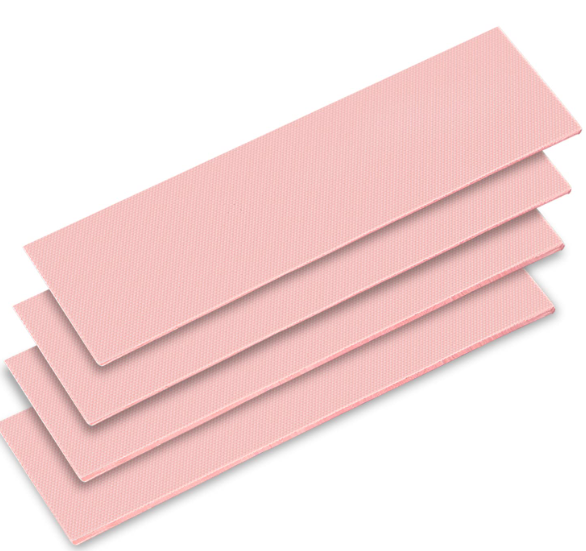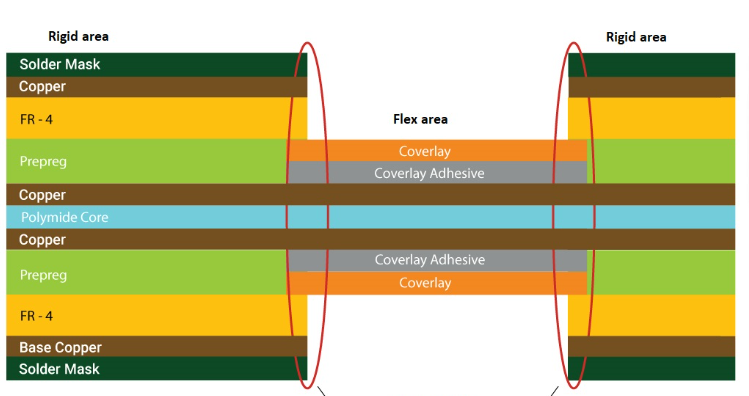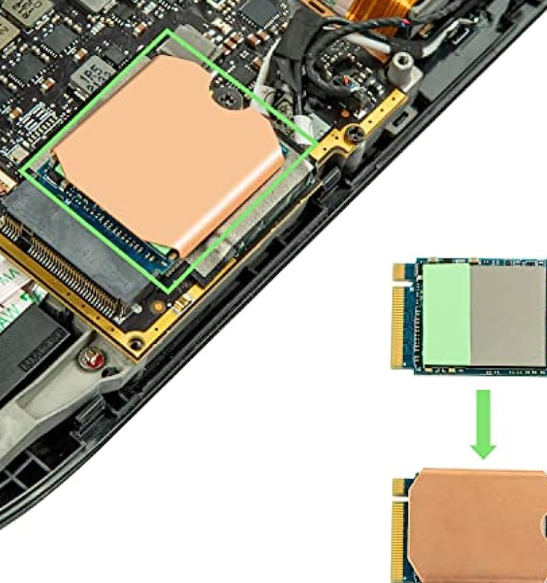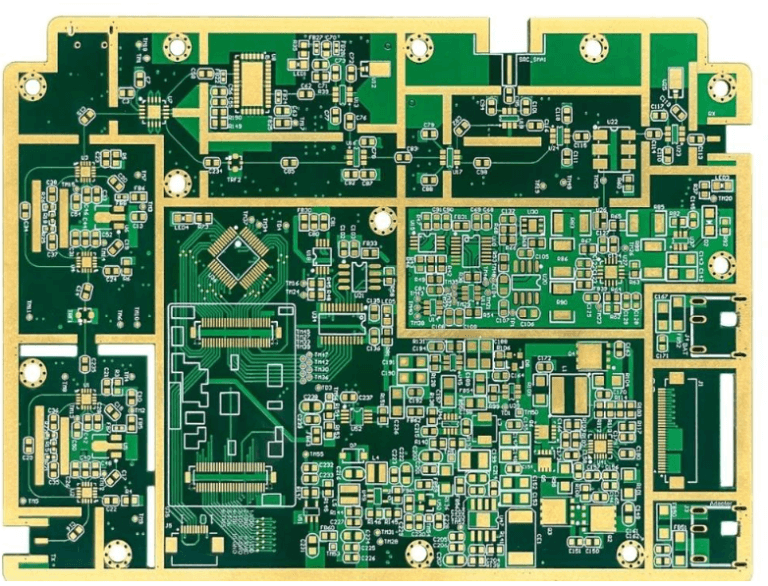Thermal pad pcb purpose
Importance Of Thermal Pad PCB Design
Thermal pads play a crucial role in the design and functionality of printed circuit boards (PCBs). As electronic devices become increasingly compact and powerful, the need for efficient thermal management has never been more critical. Thermal pads, also known as thermal interface materials (TIMs), are essential components that help manage heat dissipation in electronic circuits, ensuring the longevity and reliability of the devices.
One of the primary reasons thermal pads are indispensable in PCB design is their ability to enhance heat transfer between components and heat sinks.
Electronic components, such as integrated circuits (ICs) and power transistors, generate significant amounts of heat during operation. If this heat is not effectively dissipated, it can lead to overheating, which may cause component failure or even permanent damage to the entire circuit. Thermal pads provide a thermally conductive interface that facilitates the efficient transfer of heat from the components to the heat sinks, thereby preventing overheating and maintaining optimal operating temperatures.
Moreover, thermal pads help to fill the microscopic air gaps that naturally occur between the surfaces of electronic components and heat sinks.
These air gaps act as thermal insulators, impeding the efficient transfer of heat. By conforming to the irregularities of the surfaces, thermal pads eliminate these gaps and create a more effective thermal pathway. This improved thermal conductivity ensures that heat is rapidly and efficiently transferred away from the components, enhancing the overall thermal performance of the PCB.
In addition to their thermal conductivity properties, thermal pads also provide electrical insulation.
This is particularly important in high-power applications where electrical isolation between components is necessary to prevent short circuits and other electrical issues. Thermal pads are typically made from materials that offer both high thermal conductivity and electrical insulation, such as silicone or ceramic-filled polymers. This dual functionality makes them an ideal choice for a wide range of electronic applications.
Furthermore, the use of thermal pads in PCB design contributes to the overall reliability and lifespan of electronic devices.
By maintaining lower operating temperatures, thermal pads help to reduce thermal stress on components, which can lead to premature aging and failure. Lower temperatures also minimize the risk of thermal expansion and contraction, which can cause mechanical stress and lead to issues such as solder joint fatigue and component detachment. Consequently, the incorporation of thermal pads in PCB design helps to ensure the long-term reliability and durability of electronic devices.
Another significant advantage of thermal pads is their ease of application.
Unlike other thermal management solutions, such as thermal grease or adhesive tapes, thermal pads are simple to install and require minimal preparation. They can be easily cut to size and placed directly onto the components, providing an efficient and hassle-free solution for thermal management. This ease of use makes thermal pads a popular choice among PCB designers and manufacturers.
In conclusion, the importance of thermal pads in PCB design cannot be overstated. They play a vital role in enhancing heat transfer, filling air gaps, providing electrical insulation, and contributing to the overall reliability and longevity of electronic devices. As electronic devices continue to evolve and demand higher performance, the need for effective thermal management solutions like thermal pads will only become more critical. By incorporating thermal pads into PCB design, engineers can ensure that their devices operate efficiently, reliably, and safely, even under the most demanding conditions.

Enhancing PCB Performance With Thermal Pads
Thermal pads play a crucial role in enhancing the performance of printed circuit boards (PCBs) by effectively managing heat dissipation. As electronic devices become increasingly compact and powerful, the need for efficient thermal management solutions has never been more critical. Thermal pads, also known as thermal interface materials (TIMs), serve as a bridge between heat-generating components and heat sinks or other cooling mechanisms, ensuring that excess heat is efficiently transferred away from sensitive components.
One of the primary purposes of thermal pads in PCBs is to improve thermal conductivity.
Electronic components such as processors, power transistors, and LEDs generate significant amounts of heat during operation. If this heat is not adequately dissipated, it can lead to overheating, which in turn can cause performance degradation, reduced lifespan, or even catastrophic failure of the components. Thermal pads are designed to fill the microscopic air gaps between the heat source and the heat sink, providing a more direct path for heat transfer. This enhanced thermal conductivity helps maintain optimal operating temperatures, thereby improving the reliability and longevity of the electronic device.
In addition to impro ving thermal conductivity, thermal pads also offer electrical insulation.
Many thermal pads are made from materials that are both thermally conductive and electrically insulating, such as silicone or ceramic-filled polymers. This dual functionality is particularly important in high-power applications where electrical isolation is necessary to prevent short circuits and other electrical issues. By providing a safe and efficient means of heat transfer, thermal pads help ensure that electronic components operate within their specified temperature ranges without compromising electrical integrity.
Moreover, thermal pads contribute to mechanical stability within the PCB assembly.
As electronic devices undergo thermal cycling—repeated heating and cooling cycles—components can expand and contract, leading to mechanical stress and potential damage. Thermal pads, with their compliant and flexible nature, can absorb some of this mechanical stress, reducing the risk of component failure due to thermal fatigue. This added mechanical stability is especially beneficial in applications where devices are subjected to harsh environmental conditions or frequent temperature fluctuations.

Furthermore, the use of thermal pads can simplify the manufacturing process of PCBs.
Unlike thermal pastes or greases, which require precise application and can be messy, thermal pads are easy to handle and apply. They come in pre-cut shapes and sizes tailored to specific components, ensuring consistent and reliable thermal performance. This ease of application not only reduces manufacturing time but also minimizes the risk of errors, leading to higher overall production efficiency.
In conclusion, thermal pads are indispensable in enhancing the performance of PCBs by providing efficient thermal management, electrical insulation, mechanical stability, and ease of application. As electronic devices continue to evolve, the demand for effective thermal solutions will only grow, making thermal pads an essential component in the design and manufacturing of reliable and high-performance electronic systems. By addressing the challenges associated with heat dissipation, thermal pads help ensure that electronic devices operate safely and efficiently, ultimately contributing to the advancement of technology and the development of more powerful and compact electronic products.
Thermal Pad Selection For Optimal Heat Dissipation
In the realm of electronic design, the selection of thermal pads for printed circuit boards (PCBs) is a critical consideration for ensuring optimal heat dissipation. As electronic devices become increasingly compact and powerful, the need to manage heat effectively has never been more paramount.
Thermal pads serve as an essential component in this process, bridging the gap between heat-generating components and heat sinks or other cooling solutions. By facilitating efficient thermal transfer, these pads help maintain the performance and longevity of electronic devices.
To begin with, the primary function of a thermal pad is to enhance the thermal interface between a heat source, such as an integrated circuit (IC), and a heat sink.
This is achieved by filling microscopic air gaps that naturally occur between the two surfaces. Air, being a poor conductor of heat, can significantly impede thermal transfer if left unaddressed. Thermal pads, typically made from materials with high thermal conductivity, such as silicone or graphite, effectively displace the air and create a more direct path for heat to travel from the component to the heat sink.
When selecting a thermal pad for a PCB, several factors must be taken into account to ensure optimal performance.
One of the foremost considerations is the thermal conductivity of the pad material. Higher thermal conductivity values indicate a greater ability to transfer heat, which is crucial for high-power applications. However, it is also important to balance thermal conductivity with other properties, such as mechanical compliance and electrical insulation. A pad that is too rigid may not conform well to the surfaces it is meant to interface, leading to suboptimal thermal contact. Conversely, a pad that is too soft may not provide adequate structural support.
Another critical factor is the thickness of the thermal pad
While thicker pads can fill larger gaps and provide better mechanical cushioning, they may also introduce additional thermal resistance. This is because the heat must travel through a greater distance of material, which can impede the overall heat transfer efficiency. Therefore, selecting the appropriate thickness requires a careful assessment of the specific application requirements, including the gap size between the component and the heat sink, as well as the thermal load that needs to be managed.
In addition to material properties and thickness, the operating environment of the electronic device must also be considered.
Thermal pads must be able to withstand the temperatures and conditions they will be exposed to during operation. This includes not only the maximum operating temperature but also factors such as humidity, chemical exposure, and mechanical stress. Pads that degrade or lose their thermal properties under these conditions can compromise the thermal management system and, consequently, the performance and reliability of the device.
Furthermore, ease of application and reworkability are practical considerations that can influence the selection of a thermal pad.
Pads that are easy to handle and apply can streamline the manufacturing process and reduce the risk of errors. Additionally, in scenarios where components may need to be replaced or reworked, pads that can be easily removed and reapplied without significant degradation in performance are highly advantageous.
In conclusion, the selection of thermal pads for PCBs is a multifaceted decision that requires careful consideration of thermal conductivity, mechanical properties, thickness, environmental resilience, and practical application factors. By meticulously evaluating these aspects, designers can ensure that their thermal management solutions effectively dissipate heat, thereby enhancing the performance, reliability, and longevity of electronic devices.
Common Applications Of Thermal Pads In Electronics
Thermal pads are indispensable components in the realm of electronics, serving a critical role in ensuring the optimal performance and longevity of various devices. These pads are primarily used to facilitate efficient heat transfer between electronic components and their heat sinks or enclosures.
By bridging the gap between heat-generating components and their cooling solutions, thermal pads help maintain safe operating temperatures, thereby preventing overheating and potential damage. Their applications are diverse, spanning across numerous sectors within the electronics industry.
One of the most common applications of thermal pads is in consumer electronics, particularly in devices such as smartphones, tablets, and laptops.
These gadgets are designed to be compact and lightweight, which often results in densely packed internal components. The close proximity of these components can lead to significant heat buildup, which, if not managed properly, can degrade performance and shorten the device’s lifespan. Thermal pads are strategically placed between processors, memory chips, and other heat-sensitive components and their respective heat sinks or chassis. This ensures efficient heat dissipation, maintaining the device’s performance and reliability.
In addition to consumer electronics, thermal pads are extensively used in the automotive industry.
Modern vehicles are equipped with a plethora of electronic systems, including advanced driver-assistance systems (ADAS), infotainment systems, and engine control units (ECUs). These systems generate substantial amounts of heat during operation, necessitating effective thermal management solutions. Thermal pads are employed to transfer heat away from critical components to heat sinks or the vehicle’s chassis, thereby ensuring the systems operate within safe temperature ranges. This not only enhances the performance and durability of the electronic systems but also contributes to the overall safety and reliability of the vehicle.
The telecommunications sector also benefits significantly from the use of thermal pads.
With the advent of 5G technology and the increasing demand for high-speed data transmission, telecommunications equipment such as base stations, routers, and servers are required to handle higher power densities. This results in increased heat generation, which can adversely affect the performance and reliability of the equipment. Thermal pads are utilized to manage this heat effectively, ensuring that the equipment operates efficiently and maintains consistent performance levels. By facilitating efficient heat transfer, thermal pads help prevent thermal throttling and potential failures, thereby supporting the seamless operation of telecommunications networks.
Furthermore, thermal pads find applications in the field of renewable energy, particularly in solar inverters and wind turbine control systems.
These systems are exposed to varying environmental conditions and are required to operate continuously for extended periods. Effective thermal management is crucial to ensure their reliability and efficiency. Thermal pads are used to transfer heat away from power electronics and other critical components to heat sinks or enclosures, thereby maintaining optimal operating temperatures. This not only enhances the performance and lifespan of the renewable energy systems but also contributes to their overall efficiency and sustainability.
In conclusion, thermal pads play a vital role in the electronics industry by facilitating efficient heat transfer and ensuring the optimal performance and longevity of various devices. Their applications are widespread, encompassing consumer electronics, automotive systems, telecommunications equipment, and renewable energy systems. By effectively managing heat, thermal pads help maintain safe operating temperatures, prevent overheating, and enhance the reliability and efficiency of electronic systems. As technology continues to advance and the demand for high-performance electronic devices grows, the importance of thermal pads in ensuring effective thermal management will only continue to increase.





